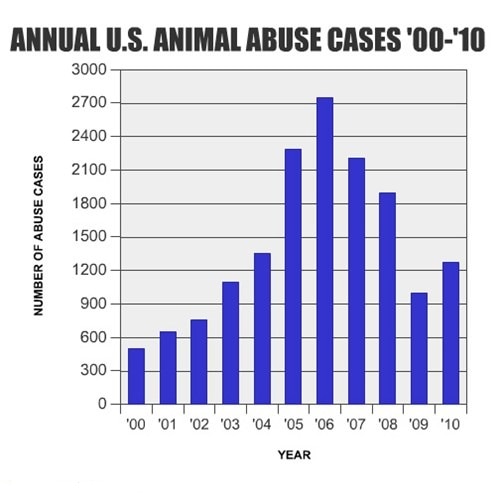Animal cruelty, a distressing phenomenon that has captured public attention for centuries, is often seen as a deeply rooted societal malaise. By diving into the chronicles of legislation concerning animal rights, one discerns not only the evolution of ethical standards but also the intricate interplay between societal values and legal frameworks. Thus, it becomes imperative to understand the historical journey and legal developments that have molded animal cruelty into the serious felony it is recognized as today in the United States.
Before delving into the formal legalities, it is crucial to recognize that the concept of animal welfare is not a modern invention. Historical records reveal that, as early as the ancient civilizations of Mesopotamia and Egypt, certain animals were revered and afforded protection due to their sacred status. However, it was not until the 19th century that animal welfare began to gain significant traction in legal discourse.
The first substantial legal progress concerning animal cruelty surfaced in the United States with the passing of the first anti-cruelty law in 1866, known as the American Society for the Prevention of Cruelty to Animals (ASPCA) law. This law was prompted by the relentless efforts of reformers who, galvanized by moral outrage over instances of animal maltreatment, sought to establish legal recourse for the protection of animals. The ASPCA’s novel approach was grounded in the premise that animals are sentient beings deserving of a degree of respect and humane treatment.
The 1866 law permitted the formation of organizations dedicated to monitoring and prosecuting animal cruelty, essentially laying the groundwork for what would eventually burgeon into a nationwide movement. Nevertheless, though celebrated, the initial anti-cruelty statutes were limited in scope and often poorly enforced. Many states were hesitant to adopt or rigorously implement these laws, illustrating a profound disconnect between burgeoning public sentiment and institutional action.
As the 19th century ushered in the concept of animal rights, the dialogue surrounding the ethical treatment of animals began to evolve. Various states started enacting their own anti-cruelty laws, albeit with varying degrees of effectiveness. By the early 20th century, the growing awareness surrounding animal suffering had kindled a collective consciousness that could no longer be ignored. This culminated in the implementation of additional statutes aimed at safeguarding animals against exploitation and abuse.
Fast forward to the mid-20th century, the plight of animals continued to ignite advocacy and press for the recognition of their rights. In 1975, the Animal Welfare Act* was enacted—a landmark piece of legislation that represented a major leap in the legal landscape concerning animal rights. This act was particularly pioneering as it established minimum standards for humane care and treatment of animals involved in research, exhibition, and transportation. Importantly, it recognized the intrinsic value of animals, paving the way for subsequent legal developments in various states.
From the 1980s onward, public awareness of animal cruelty surged, and the movement gained formidable momentum. Legislative changes reflected this growing concern, with many states bolstering their animal cruelty statutes and increasingly classifying egregious acts of cruelty as felonies. These advancements reflected an evolving paradigm—a tangible shift toward acknowledging the sentiments and rights of animals. For example, states such as Illinois, California, and Michigan instituted tougher penalties, thereby elevating the consequences of animal abuse to a felony level, which includes potential imprisonment and substantial fines.
Throughout the late 20th and early 21st centuries, and spurred by waves of activism, the legislation against animal cruelty garnered more public and political support. The introduction of programs aimed at educating the public about animal rights and humane treatment proliferated. In 2015, the U.S. Congress passed the Animal Welfare Act to enhance existing protections for animals, including greater scrutiny of puppy mills and the illegal wildlife trade. Additionally, cruelty to animals was recognized as a predictor of violence against humans, further cementing the need for legal remedies.
Today, animal cruelty is recognized as a felony in most states across the U.S. The classification and prosecution of animal cruelty offenses vary significantly from state to state, with some jurisdictions adopting stringent measures while others maintain more lenient standards. For instance, states like New York and California have comprehensive laws that not only punish those who commit acts of cruelty but also address the broader issues related to neglect and abandonment.
Yet, despite legislative advancements, the modern landscape remains rife with challenges. The enforcement of animal cruelty laws often lacks adequate resources and commitment, leading to a persistent gap between law and practice. Moreover, social attitudes towards animals vary widely, reflecting a complex tapestry of cultural beliefs and values. Bridging this divide is crucial, as it entails fostering a deeper understanding of the significance of humane treatment of animals in cultivating a compassionate society.
In conclusion, the legal evolution surrounding animal cruelty in the U.S. elucidates an ongoing struggle for recognition and justice. From the inception of anti-cruelty laws in the mid-19th century to the contemporary acknowledgment of animal rights as a felony-level offense, the trajectory of legal reform reveals an intricate narrative of social consciousness. While tangible progress has been made, the journey is far from over. Continued advocacy, education, and community engagement are paramount in addressing the enigma of animal cruelty. Ultimately, it requires an unwavering commitment to instigate change and uphold the dignity of all living beings.









